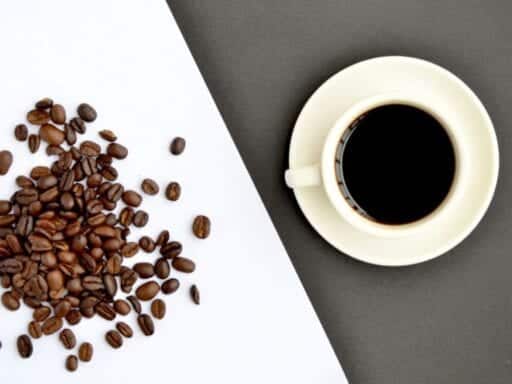The low price of coffee doesn’t affect consumers, and it could seriously hurt coffee growers.
American coffee consumption is approaching record highs — as is the cost of a cup of coffee — but the cost of coffee beans is plummeting. A pound of wholesale beans now costs less than $1 on New York’s Intercontinental Exchange, the lowest price per pound in more than a decade, the Wall Street Journal reports.
A dip in coffee prices won’t necessarily change things for the average coffee drinker, but it’s terrible news for coffee farmers, especially small enterprises. For some, the steep drop in price has made the industry unsustainable, often with serious human costs.
The Journal points to two key factors behind the drop in prices: a rise in global production, especially in Brazil, and the devaluation of Brazil’s currency.
Coffee, especially the arabica variety, is a finicky plant that can only thrive in specific environments. Virtually all the world’s coffee is grown in a few dozen countries that are relatively close to the equator, a region known as the “Bean Belt.” Brazil is the world’s leader in coffee production, followed by Vietnam, Colombia, and Indonesia. In 2018, Brazil produced more than 3 billion kilograms of coffee beans, according to data from the International Coffee Organization. Vietnam, which comes second to Brazil in coffee production, only produced 1.7 billion.
Despite its dominance of the global coffee industry, Brazil’s currency has been in free fall since 2016, due to a combination of an economic recession and political instability. In June 2011, one dollar was equivalent to roughly 1.6 Brazilian reals. Today, a dollar gets you approximately 3.8 reals. Since Brazil is the world’s leader in coffee production, the value of the real affects global coffee prices — meaning the devaluation of the real is affecting coffee growers around the world, whose beans are now selling for less money than before.
Five years ago, coffee futures were on the rise, due to a coffee shortage spurred by a drought in Brazil and a coffee rust epidemic in Central America. But coffee production has bounced back — partly because other coffee-producing countries have increased output in an attempt to counter Brazil’s dominance of the industry — and now there’s an oversupply. The Colombian government, for example, created initiatives to get farmers to grow more coffee. Instead of improving individual farmers’ fortunes, though, this effort contributed to the oversaturation of the market.
The drop in coffee prices has exposed the difference between the “haves and the have-nots” in the countries where the crop is grown, David Brooks, the managing director of the UK-based coffee-roasting company Percol, told the Journal. Some farmers are forced to cope with the drop in prices by cutting spending on fertilizers, pesticides, and other things that protect their crops — leaving them vulnerable to insects and disease, and jeopardizing future harvests.
Small farmers with fewer resources have more to lose, Brooks explained. Now that prices are so low, growers now spend more money on harvesting and production than they do on the Intercontinental Exchange. If a good year for a coffee farmer means a healthy crop that sells for a pittance, and a bad year means a substantial portion of their harvest being wiped out by climate change-induced droughts and plant diseases, what chance do small farmers have? For small, family-owned and -operated farms that have less capital than their larger competitors, these two factors basically amount to a death sentence.
Coffee farmers whose livelihoods are being destroyed by a combination of climate change and a sharp drop in the price of beans are giving up on their farms and, in many cases, leaving their countries altogether. “You have Central Americans immigrating to the U.S. and Africans moving up to Europe because coffee prices are too low,” Roberto Vélez, the CEO of the National Federation of Coffee Growers in Colombia, told the Journal.
The drop in arabica prices barely trickles down to the average coffee drinker, especially those who are buying premium blends or prefer to get their fix at a coffee shop. Coffee prices have hardly budged at the consumer level, especially in coffee shops, where other factors like milk, sugar, employment costs, and rent are factored into the cost of a latte. Worse still, if this trend continues, it’s likely that some farmers will give up on the industry altogether.
Want more stories from The Goods by Vox? Sign up for our newsletter here.
Author: Gaby Del Valle
Read More



